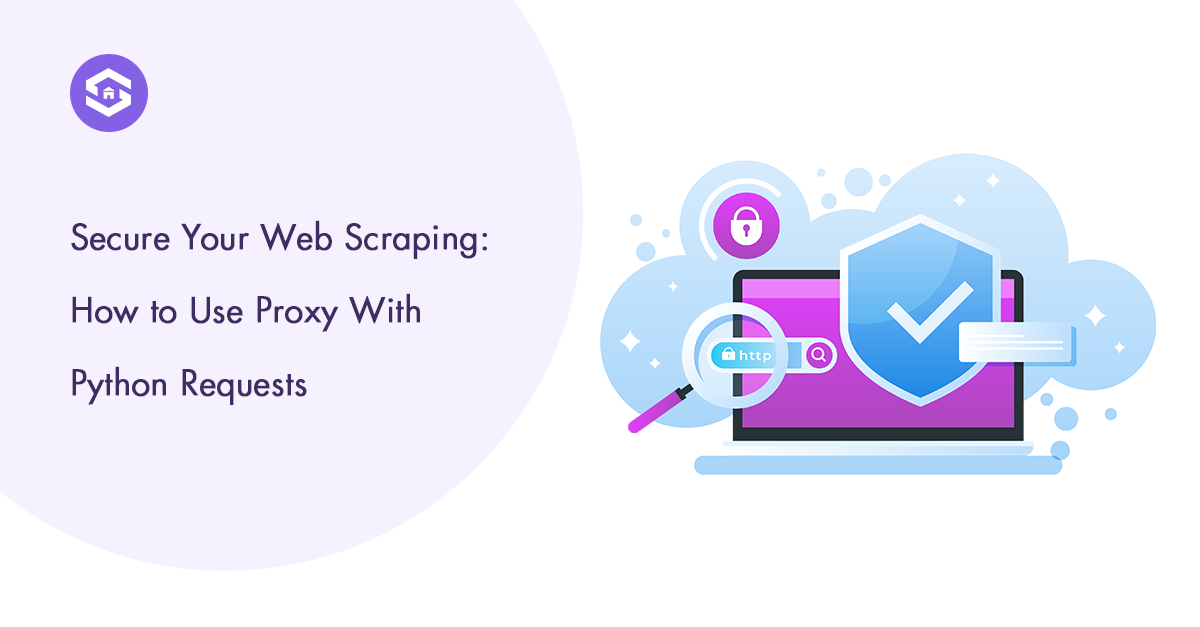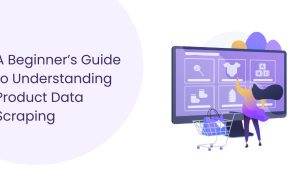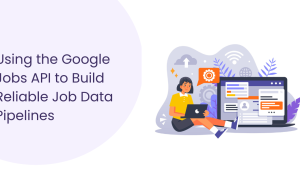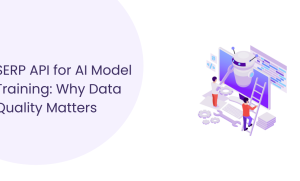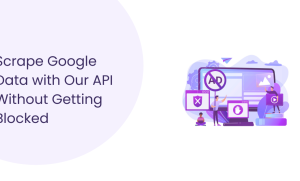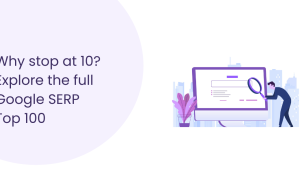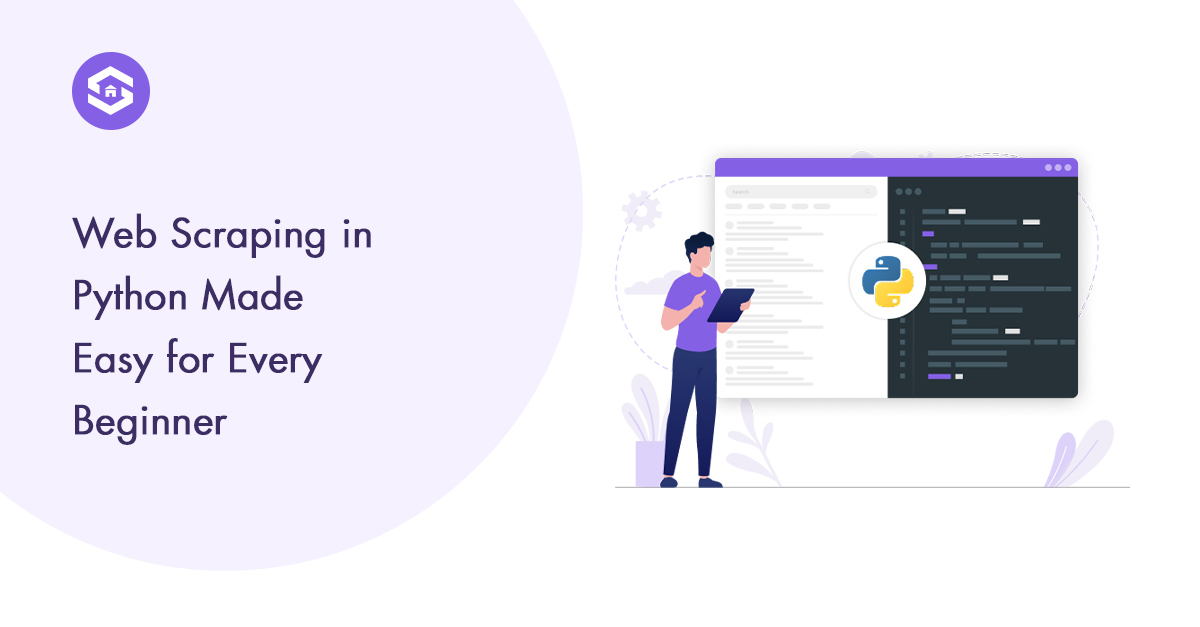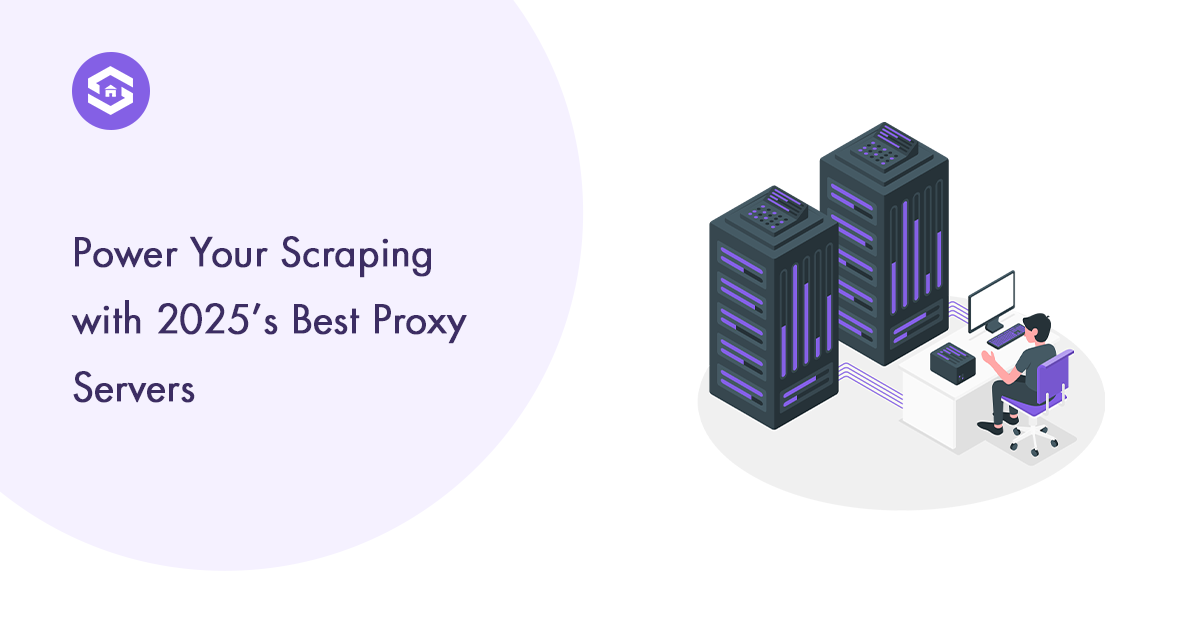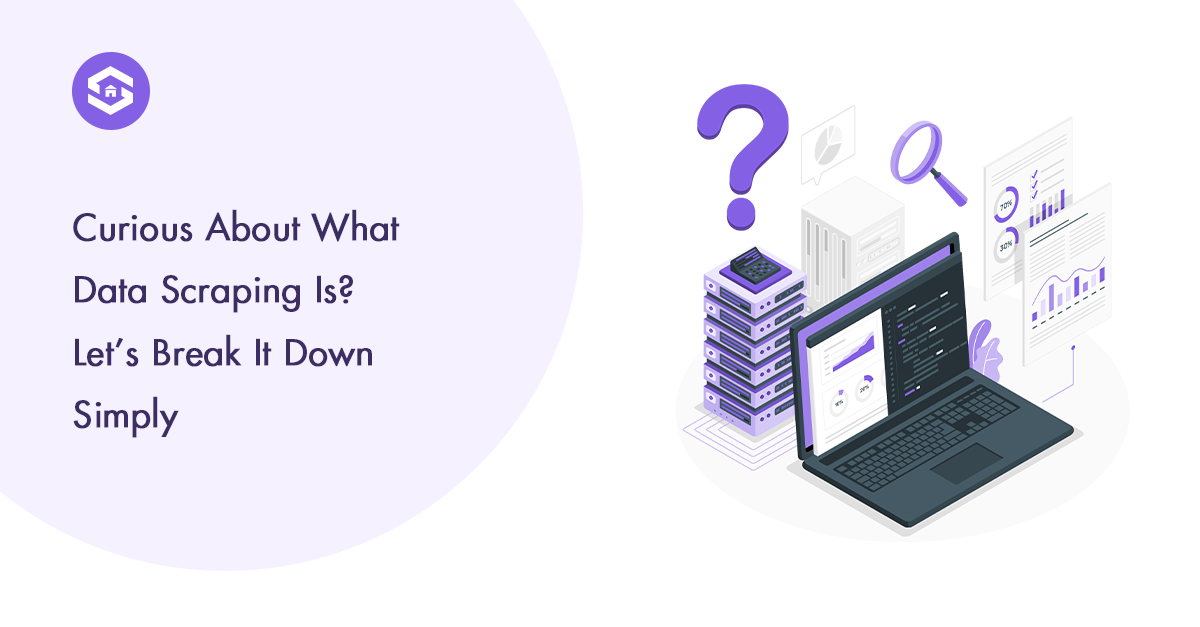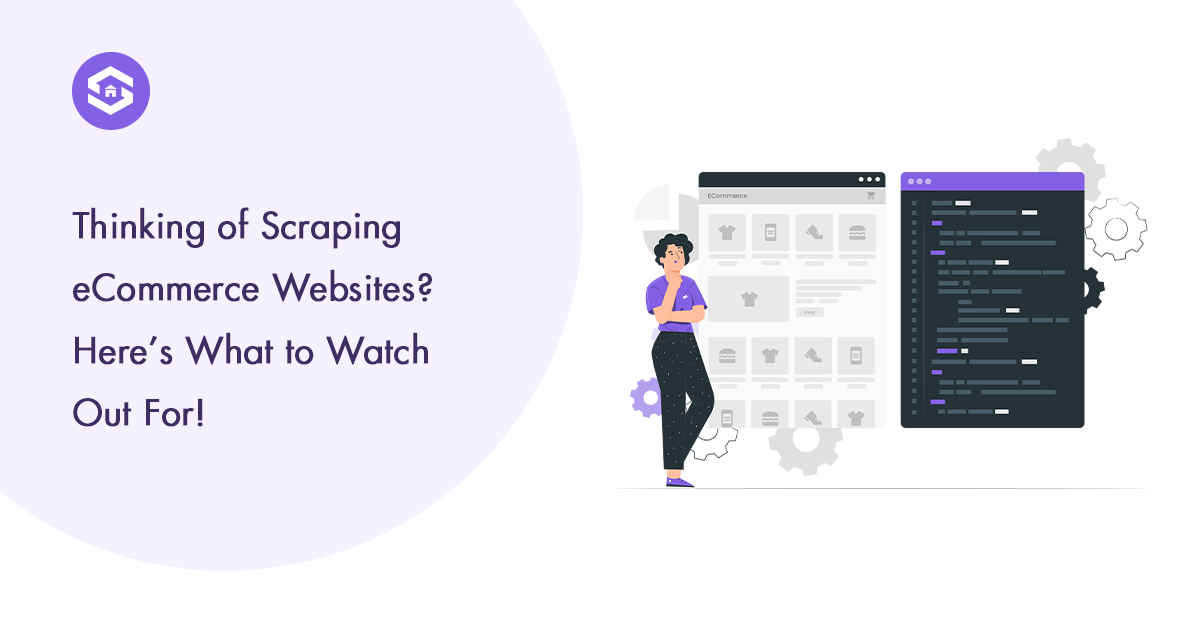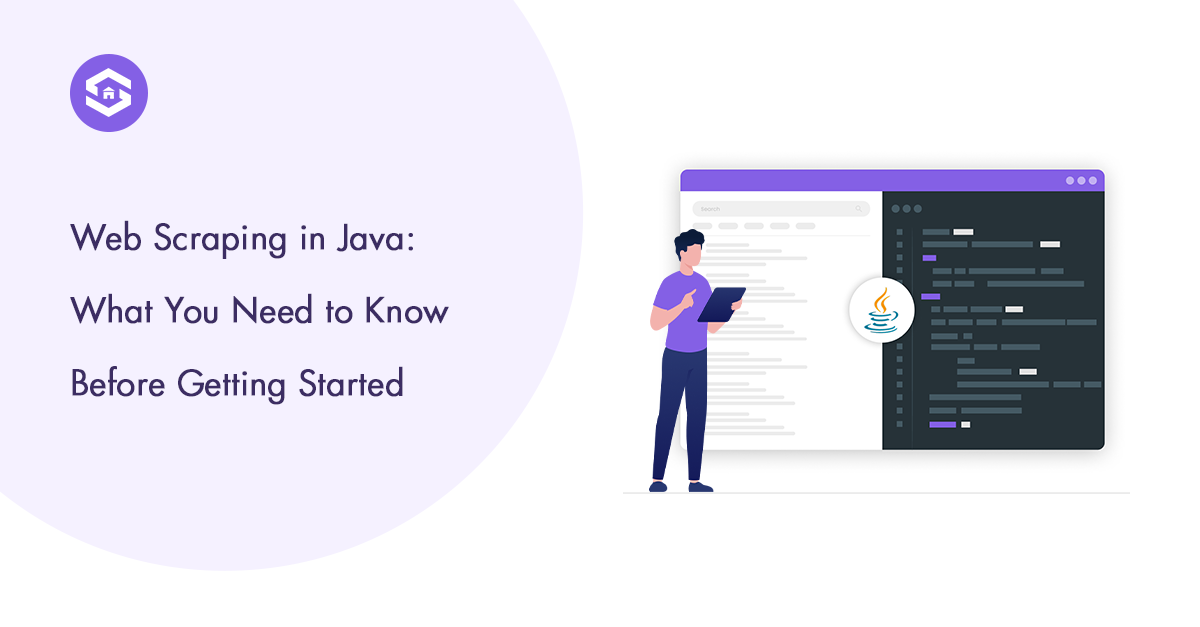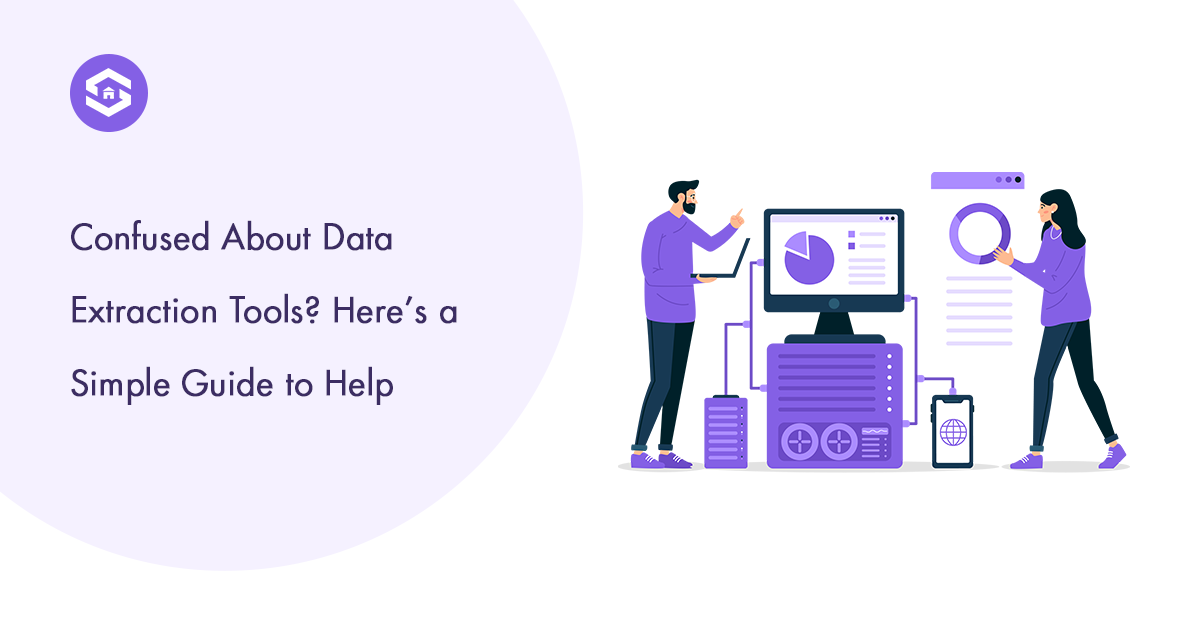Table of Contents
Table of Contents
Web scraping has become an important data collection technique in today’s online environment. Businesses and scholars use it to collect valuable data for market research, competitive analysis, and research. However, web scraping has drawbacks, especially when websites use anti-scraping methods. The easiest way to address these issues is to use proxies with Python Requests. This deep article will help you through the process of installing and using proxies for safe and effective web scraping.
What Are Proxies and Why Use Them for Web Scraping?
A proxy server is an intermediary server that sits between your computer and the websites you visit. When you utilize a proxy, your request is routed through an intermediary server first. It masks your actual IP address and gives the impression that the request is coming from the proxy server.
Using proxies for web scraping offers numerous significant benefits. Your true identity is hidden behind the proxy server, keeping you private and secure when scraping. The majority of websites use rate restriction or IP blocking to prevent multiple requests from the same source. Rotating through a list of numerous proxies allows you to disperse your queries across different IP addresses and avoid exceeding these limits. This enables you to collect more data without being interrupted or blocked.
Types of Proxies for Web Scraping
Understanding the different types of proxies available is crucial for choosing the right option for your web scraping needs.
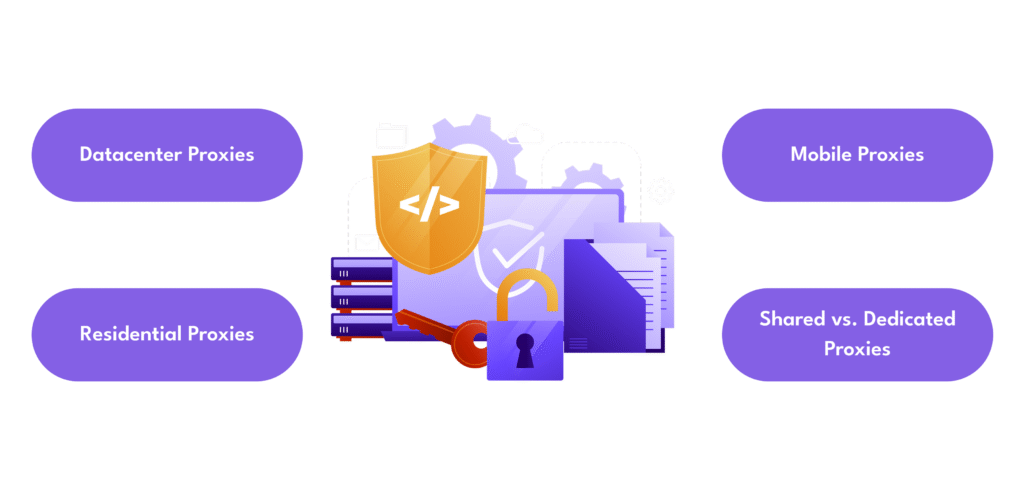
Datacenter Proxies:
They’re the most affordable and widely used proxies, placed on data centers, not assigned by Internet Service Providers. Datacenter proxies are fast and possess a high uptime, but can be traced by sophisticated anti-bot tools as they’re not tied to residence ISPs. Utilize them for scraping operations that won’t be discovered.
Residential Proxies:
These proxies utilize actual IP addresses rented by Internet Service Providers to actual residential users. They appear as regular user traffic to the target websites, making them much harder to block and detect. Residential proxies are ideal for scraping websites with advanced anti-scraping capabilities, though they are pricier than data centre proxies.
Mobile Proxies:
These employ mobile device IP addresses on cellular networks. Mobile proxies offer the highest level of anonymity since mobile IPs are constantly changing and are rarely intercepted by websites. They’re best for accessing mobile sites of websites or services, and tracking user behaviour on devices.
Shared vs. Dedicated Proxies:
Shared proxies are used by many users at the same time, making them inexpensive but less secure owing to other users’ activity. Dedicated proxies are given to a single user and provide superior performance and security, though at a premium.
Setting Up Python Environment for Proxy-Based Web Scraping
Before you can begin proxy implementation, you must first set up your Python environment by installing the right tools and libraries.
Our web scraping infrastructure is built on the Python queries package, which provides a simple yet robust interface for making HTTP queries. To install it, simply type pip install requests into your terminal or command prompt. For more advanced scraping operations, consider installing BeautifulSoup4 (pip install beautifulsoup4) for HTML parsing and Pandas (pip install pandas) for data manipulation.
When working with proxies, it’s also useful to install the Requests-IP-Rotator (pip install requests-ip-rotator) for simple proxy rotation and the Fake-UserAgent (pip install fake-user agent) to imitate various browsers.
Basic Proxies Setup with Python Requests
It is straightforward to create basic Proxies using Python Requests. When making HTTP requests in simple dictionary format, you can use the Requests library to connect to a proxy server.
To configure a single proxy, establish a proxy dictionary that includes the protocol and address. If authentication is necessary, the proxy address often takes the form “protocol://username:password@proxy_address:port”, or simply “protocol://proxy_address:port”
After creating your proxy dictionary, provide it to the Requests method using the “proxies” option. This setting routes your request through your specified proxy server, masking your original IP address and potentially evading simple access controls.
Implementing Proxy Authentication
The majority of proxy services are designed to require authentication to avoid illegal use. Python Requests supports proxy authentication in two ways.
The most common way is to include the authentication credentials in the proxy URL string itself, in the pattern “protocol://username:password@proxy_address:port”. It is simple to use, but it can leave your credentials exposed in your code, which is not ideal for production applications
To increase security, use the Requests auth argument with HTTPProxyAuth. This prevents your login credentials from being blended with the proxy URL, ensuring that your code is secure and straightforward to manage. You import HTTPProxyAuth from the requests.auth module and populate an auth object with your login and password.
Rotating Proxies for Enhanced Anonymity
Using a single proxy for all your scrapes may result in detection and blocking, particularly for big scrapes. Proxy rotation involves rotating many proxy servers for each request, greatly minimizing the chances of detection.
Provision of a proxy pool means maintaining a pool of available proxy servers and switching to another one for each new request. Simple rotation can be achieved using Python’s random module, or more sophisticated selection based on proxy performance, location, or other factors can be employed.
There are several third-party libraries available that might simplify proxy rotation in Python. Requests-IP-Rotator provides a convenient interface for proxy rotation and managing proxy pools. ProxyRotator provides more advanced features like proxy testing and monitoring of performance. These libraries may save you some development time and provide robust rotation capabilities out of the box.
Handling Proxy Errors and Failures
Proxies may fail due to connection failure, authentication failure, or being blocked by the target websites. Proper error handling ensures your scraping runs without interruption even when proxies occasionally fail.
Some of the general proxy error types include HTTP status error, auth failure, and connection timeout. You can catch all these exceptions using try-except blocks and invoke corresponding recovery processes such as retrying using another proxy or modifying the request parameters.
Having an exponential backoff with automatic retry can assist with coping with transient failure without requiring intervention. The technique doubles the time to wait between retries, reducing the load upon your system and the target site and providing the best chance of eventual success.
Testing and Verifying Proxy Configurations
Before running huge-scale scraping operations, it’s vital to verify that your proxy setup is working effectively and offering the predicted anonymity.
You can test your proxy configuration by making requests to IP checking offerings like httpbin.org, which return information about the request, such as the IP address. By comparing the back IP with your actual IP, you could confirm whether your requests are being properly routed through the proxy.
For more comprehensive testing, tools like ProxyChecker can confirm multiple aspects of proxy performance, which include speed, anonymity degree, and compatibility with specific web sites. Regular proxy checking out allows discovering troubles early and guarantees reliable scraping operations.
Proxy Management for Large-Scale Scraping
As your scraping operations grow, handling proxies manually will become impractical. Implementing a proxy management system can streamline this process and enhance basic performance.
A good proxy management system ought to manage responsibilities like proxy rotation, overall performance monitoring, and automatic replacement of failed proxies. It has to additionally put in force clever rate limiting to save you from overloading goal websites or proxy servers, decreasing the risk of being blocked.
For very large operations, thinking about a proxy service API is probably more cost-effective than managing your proxy infrastructure. Services like Bright Data, Oxylabs, and SmartProxy provide APIs that provide access to massive proxy pools with built-in management features, allowing you to automate your scraping, as opposed to proxy management.
Advanced Proxy Techniques for Difficult Websites
Some websites employ sophisticated anti-scraping measures that can detect and block even rotating proxies. Advanced techniques can help overcome these challenges.

Residential proxy networks route your requests via real residential IP addresses, making them seem like authentic user site visitors. This approach is particularly powerful towards systems that flag data centre IPs as capacity bots.
Browser fingerprinting protection involves modifying request headers and parameters to imitate different browser environments, preventing websites from figuring out your scraper based on constant patterns. This technique, mixed with proxy rotation, considerably increases your probability of keeping off detection.
Geolocation focused on with proxies lets you get access to location-specific content by using routing requests via particular geographic areas. This capability is valuable for marketplace research and localized data collection.
Ethical and Legal Considerations
While proxies enhance your web scraping capabilities, it’s critical to apply them responsibly and legally.
Always test a website’s Terms of Service and robots.txt file before scraping to make sure you are not violating their polices. Many websites explicitly prohibit scraping or place limitations on automated access, which you have to recognize.
Implement rate limiting to your scraping code to keep away from overwhelming the target websites with requests. This practice is no longer the most effective, helps you avoid detection, however, also demonstrates consideration for the website’s resources.
Be mindful of the legal implications of your scraping activities, which could vary depending on the jurisdiction. In some regions, unauthorized scraping may violate computer access legal guidelines or intellectual property rights, potentially leading to legal consequences.
Optimizing Proxy Performance
Proxy servers can introduce latency and reliability problems, which need to be controlled for efficient scraping operations.
Monitoring proxy overall performance facilitates becoming aware of slow or unreliable proxies that could bottleneck your scraping operations. Parameters like response time, fulfilment fee, and uptime ought to be tracked to maintain a healthy proxy pool.
Connection pooling and session reuse can appreciably enhance efficiency by way of keeping persistent connections with proxy servers rather than establishing new connections for every request. The Requests library helps session items that facilitate this optimization.
Asynchronous requests with libraries like aiohttp or asyncio can dramatically increase throughput by handling multiple requests concurrently. This technique is in particular effective whilst operating with proxy pools, as it allows you to utilize multiple proxies simultaneously.
Conclusion
Setting up Proxies with Python Requests is essential for serious web scraping tasks. Proxies protect your identity and enable large-scale, reliable data collection by bypassing unusual scraping limitations.
By understanding the various types of proxies, implementing proper rotation and error handling, and adhering to ethical scraping practices, you can establish robust scraping frameworks that consistently gather the statistics you need while respecting website resources and policies.
As web scraping technologies and anti-scraping measures continue to evolve, staying informed about new proxy strategies and best practices will help ensure your scraping operations remain effective and undetected. Whether scraping for business intelligence, research, or data analysis, mastering proxy implementation will significantly enhance your capabilities and outcomes.

